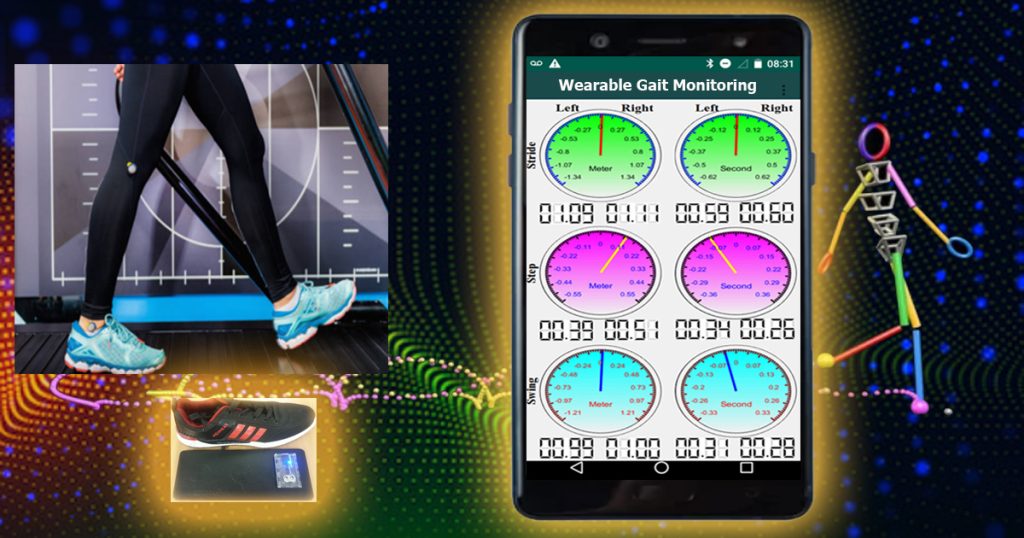Wearable Gait Analysis

Robot Bangla has developed a wearable insole system for gait analysis using artificial intelligence and machine learning techniques. The system is designed to be portable, low-cost, and easy to use, making it a valuable tool for gait assessment both in clinical settings and at home. The system utilizes sensors called IMUs (accelerometers, gyroscopes, and magnetometers) that are placed in the insoles of shoes. The IMU data is transmitted wirelessly to an Android app using Bluetooth technology, and is used to create real-time visualizations of gait information. The system is able to identify individual movements, determine normal gait patterns, and visualize changes in gait patterns in real-time. This information is useful for diagnosing issues that cause pain and for implementing and evaluating treatments to correct gait abnormalities. The system includes a number of features, including real-time dial visualization, visualization of time variation in individual legs, visualization of asymmetry between legs, and boxplot-based visualization. It can be used to capture data for analyzing the stages of various diseases, managing treatment plans, and evaluating treatment outcomes. These diseases include the early stages of diabetic ulceration, Parkinson’s disease, different stages of Alzheimer’s disease, quantification of gait before and after knee surgery, and remote monitoring of gait in older adults for fall risk assessment and exercise to prevent injury. Overall, the system provides a sophisticated gait assessment solution that does not require an expensive and elaborate laboratory setup, and can be used for gait assessment at home or in clinical settings.
In addition to the features already mentioned, the Robot Bangla gait analysis system has several other benefits that make it a valuable tool for a wide range of applications. One of the key advantages of the system is its ability to provide real-time visualizations of gait information. This allows users to see how their gait is changing in real-time, and can be especially useful for identifying problems or issues that may not be immediately apparent. The system’s artificial intelligence and machine learning capabilities also allow it to identify unique movements and determine normal gait patterns, which can be useful for comparing an individual’s gait to a baseline or reference. This can help to identify abnormalities or deviations from normal gait patterns that may be indicative of underlying problems or issues.
Another key benefit of the Robot Bangla gait analysis system is its portability and low cost. The system is designed to be easy to use and does not require an elaborate laboratory setup, making it an ideal solution for gait assessment in a variety of settings. Whether used at home or in a clinical setting, the system is able to provide valuable insights into gait patterns and abnormalities, and can be used to help diagnose and treat a wide range of conditions.
In conclusion, the Robot Bangla gait analysis system is a powerful and versatile tool for analyzing and assessing gait patterns. Its combination of artificial intelligence, machine learning, and real-time visualization capabilities make it an ideal solution for identifying and correcting gait abnormalities, and its portability and low cost make it an attractive option for a wide range of applications. Whether used at home or in a clinical setting, the system is sure to be a valuable asset for anyone looking to better understand and improve their gait patterns.
